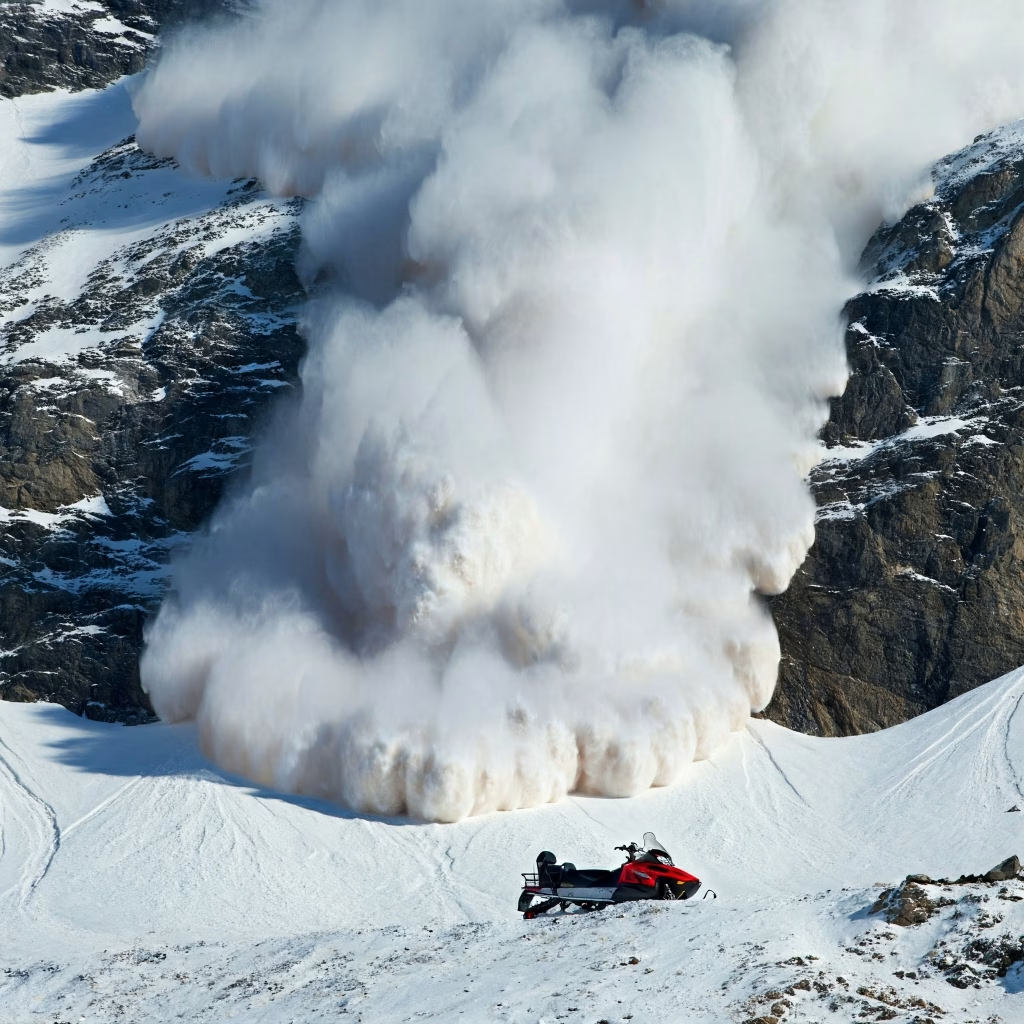
The Complete Guide to Beacon Practice, Companion Rescue, and Snowmobiling Safety
Beacon Practice, Companion Rescue, and Snowmobiling Safety – Snowmobiling is an exhilarating winter activity that allows you to explore breathtaking landscapes and enjoy the thrill of riding through snowy terrain. However, it’s essential to prioritize safety while venturing into the backcountry. This comprehensive guide emphasizes the crucial role of beacon practice, companion rescue, and essential safety measures for snowmobilers.
Understanding the Importance of Snowmobile Beacon Practice
Avalanches are a significant risk in mountainous regions, and being prepared can make all the difference in survival. A beacon, also known as an avalanche transceiver, is a critical piece of safety equipment that emits a signal to help locate buried individuals. Regular beacon practice is paramount to ensure you can efficiently use this device in an emergency.
Why Beacon Practice Matters
- Time is of the essence: In an avalanche, every second counts. Beacon practice helps you quickly locate and rescue buried individuals.
- Develops muscle memory: Regular practice instills the necessary skills, allowing you to react effectively under pressure.
- Boosts confidence: Knowing how to use your beacon instills confidence and reduces panic in a stressful situation.
Tips for Effective Beacon Practice
- Practice regularly: Aim for monthly practice sessions to maintain your skills.
- Vary scenarios: Simulate different burial situations to prepare for various challenges.
- Utilize online resources: SledManuals.com offers valuable resources and tutorials on beacon practice.
- Join group sessions: Participate in organized beacon practice sessions with fellow snowmobilers.
Mastering Companion Rescue Techniques
While beacons are crucial, companion rescue remains the most critical aspect of avalanche safety. This involves a series of steps to quickly locate, extricate, and provide first aid to buried individuals. Beacon Practice, Companion Rescue, and Snowmobiling Safety
Steps in Snowmobile Companion Rescue
- Perform a beacon search: Use your beacon to locate the buried individual’s signal.
- Pinpoint the location: Fine-tune your search to identify the exact burial spot.
- Begin shoveling: Efficiently remove snow to uncover the victim.
- Provide first aid: Assess the victim’s condition and administer necessary aid.
Essential Companion Rescue Skills
- Probing: Learn proper probing techniques to accurately locate the victim.
- Shoveling: Practice efficient shoveling methods to quickly remove snow.
- Airway management: Know how to clear the victim’s airway and provide rescue breaths.
- Hypothermia treatment: Understand how to prevent and treat hypothermia.
Snowmobiling Safety: A Comprehensive Guide
Beyond Beacon Practice, Companion Rescue, and Snowmobiling Safety, several other safety measures are crucial for snowmobilers.
Pre-Ride Preparations
- Check the weather: Monitor avalanche forecasts and weather conditions before heading out.
- Plan your route: Share your itinerary with someone and stick to established trails.
- Inspect your snowmobile: Ensure your machine is in good working condition.
- Pack essential gear: Carry a first-aid kit, survival gear, and extra clothing.
On-Trail Safety
- Ride responsibly: Maintain a safe speed and distance from other riders.
- Be aware of surroundings: Watch for hazards like trees, rocks, and changing terrain.
- Stay hydrated and fueled: Pack snacks and water to maintain energy levels.
- Communicate effectively: Use hand signals and radios to communicate with your group.
Avalanche Awareness
- Recognize avalanche terrain: Learn to identify slopes prone to avalanches.
- Practice safe riding techniques: Avoid risky slopes and cornices.
- Carry avalanche safety gear: In addition to a beacon, carry a shovel and probe.
- Continuously assess conditions: Monitor snowpack stability and weather changes.
Additional Safety Considerations
- Alcohol and drugs: Never operate a snowmobile under the influence of alcohol or drugs.
- Fatigue: Avoid riding when tired, as it impairs judgment and reaction time.
- Altitude sickness: Be aware of altitude sickness symptoms and take necessary precautions.
- Wildlife encounters: Respect wildlife and maintain a safe distance.
Choosing the Right Snowmobile Gear
Investing in appropriate gear for Beacon Practice, Companion Rescue, and Snowmobiling Safety enhances both safety and enjoyment while snowmobiling.
Essential Gear
- Probe, Shovel and Beacon: These tools are not the place to get Cheap and may save a Life
- Helmet: A well-fitting helmet is crucial for head protection.
- Goggles: Protect your eyes from snow, wind, and glare.
- Gloves: Insulated gloves keep your hands warm and improve grip.
- Boots: Waterproof and insulated boots keep your feet warm and dry.
- Jacket and pants: Choose breathable and waterproof outerwear.
Additional Gear
- Avalanche airbag pack: Provides additional buoyancy in case of an avalanche.
- GPS device: Helps with navigation and emergency location.
- Communication device: Enables communication with your group or emergency services.
Resources for Snowmobilers
- SledManuals.com: Offers valuable information on snowmobile Maintenance, Repair, and Service Manuals.
- Avalanche Canada: Provides avalanche forecasts, safety education, and resources.
- Local snowmobile clubs: Connect with experienced riders and learn about local trails and conditions.
Conclusion
Snowmobiling offers an incredible way to experience winter wonderlands. By prioritizing safety and practicing essential skills, you can ensure a safe and enjoyable adventure. Remember, beacon practice, companion rescue, and responsible riding are vital for mitigating risks and protecting yourself and your fellow riders.
Share this:
- Click to share on Facebook (Opens in new window) Facebook
- Click to share on X (Opens in new window) X
- Click to share on Reddit (Opens in new window) Reddit
- More
- Click to share on LinkedIn (Opens in new window) LinkedIn
- Click to share on Mastodon (Opens in new window) Mastodon
- Click to share on X (Opens in new window) X
- Click to share on Pinterest (Opens in new window) Pinterest
- Click to share on Threads (Opens in new window) Threads
- Click to share on Bluesky (Opens in new window) Bluesky
- Click to share on Tumblr (Opens in new window) Tumblr
- Click to email a link to a friend (Opens in new window) Email
- Click to share on Pocket (Opens in new window) Pocket
- Click to share on Telegram (Opens in new window) Telegram
- Click to share on WhatsApp (Opens in new window) WhatsApp
- Click to share on Nextdoor (Opens in new window) Nextdoor
